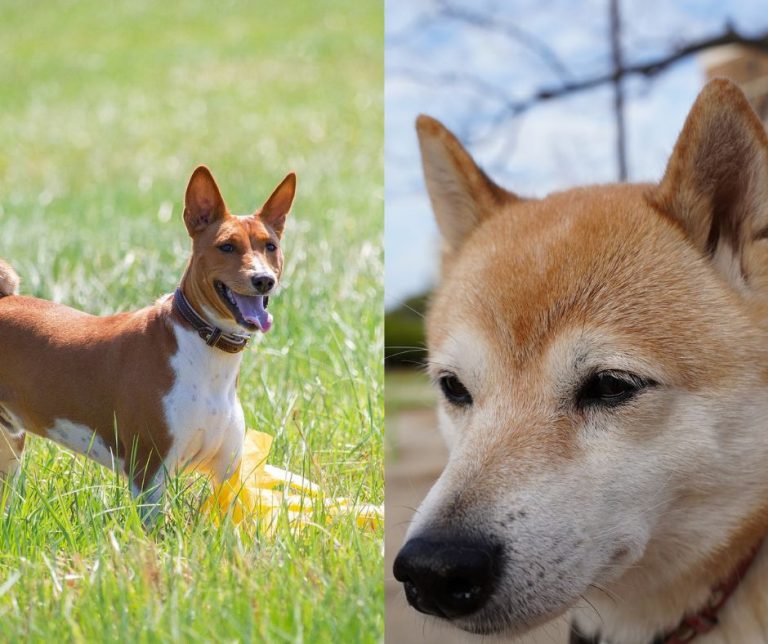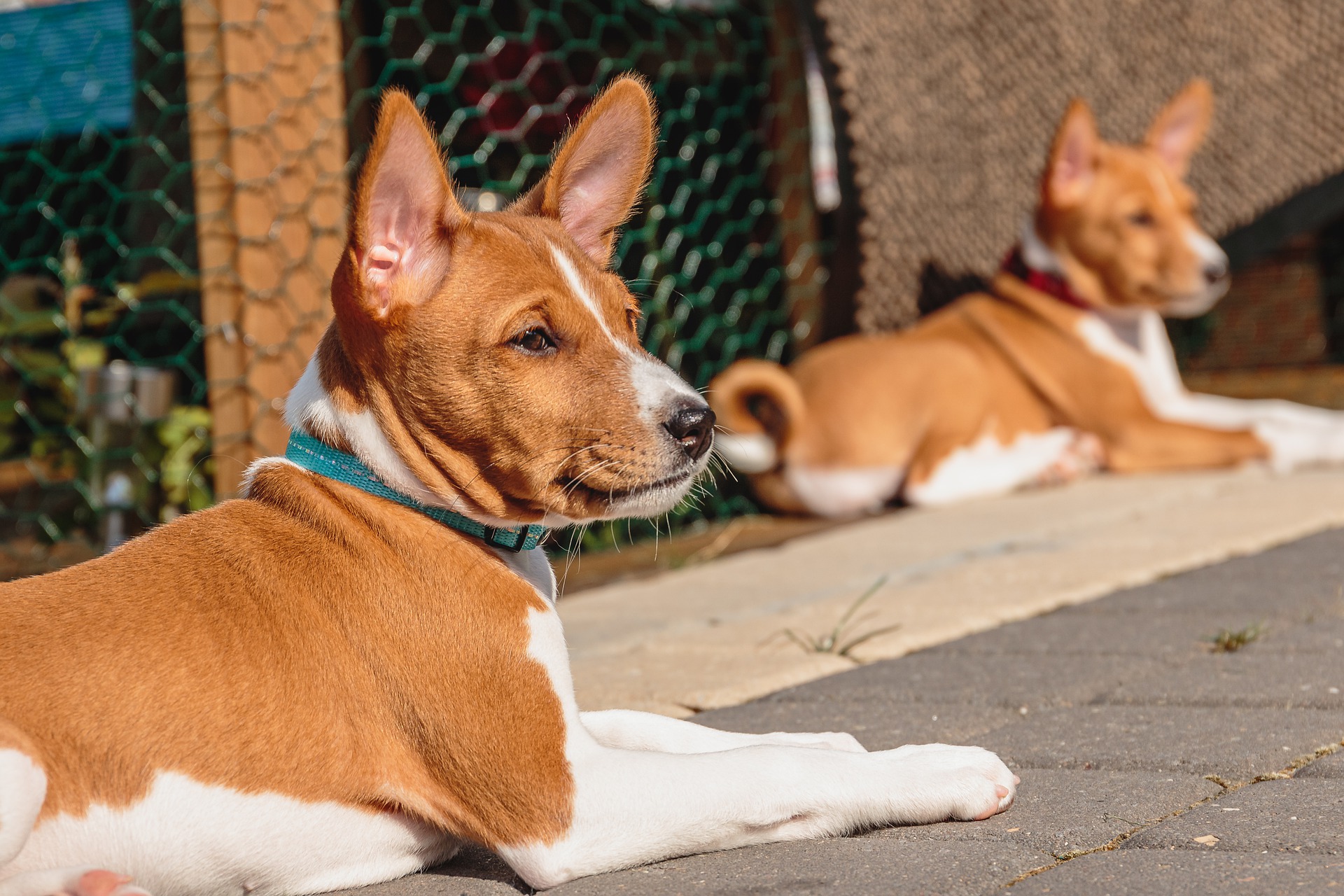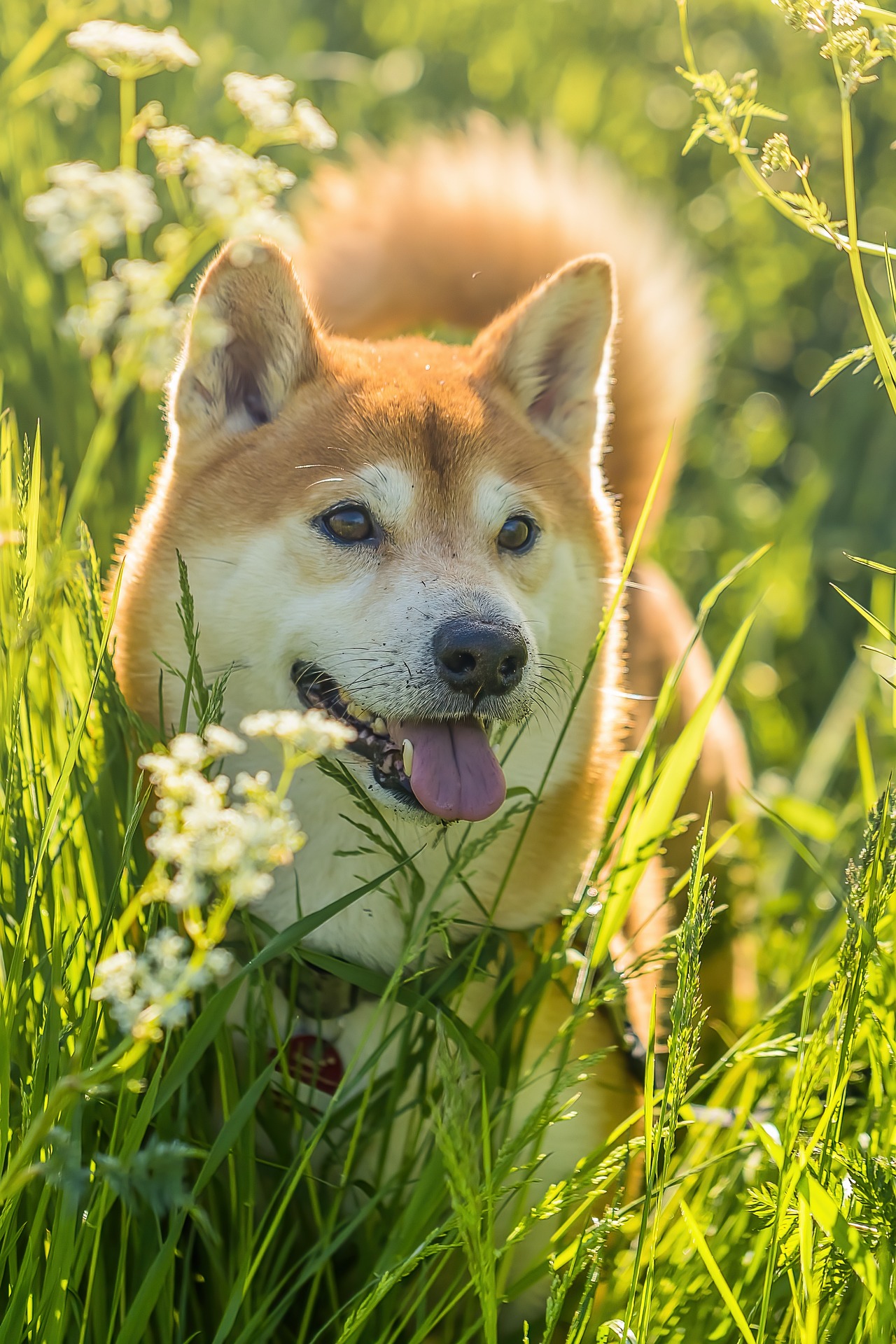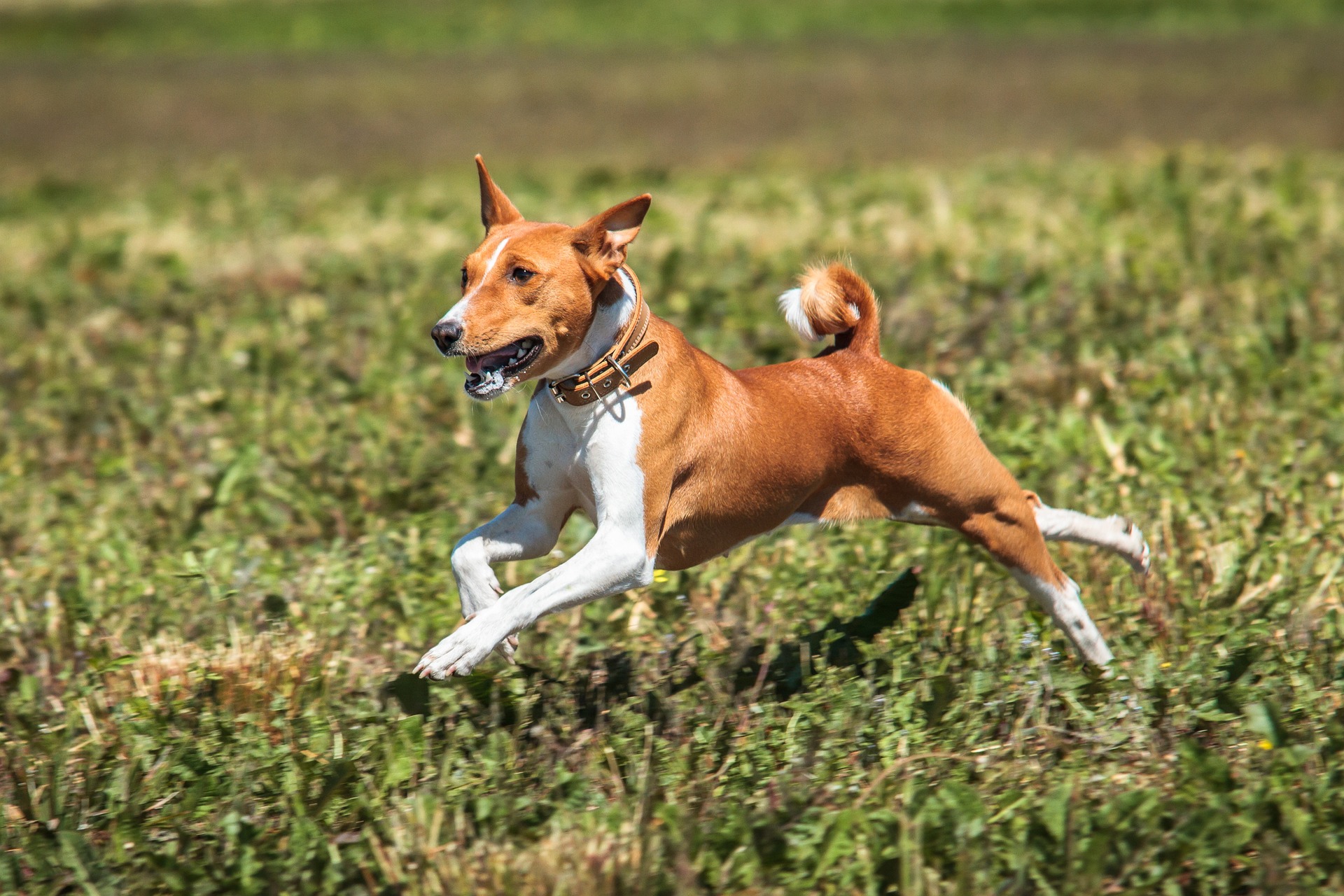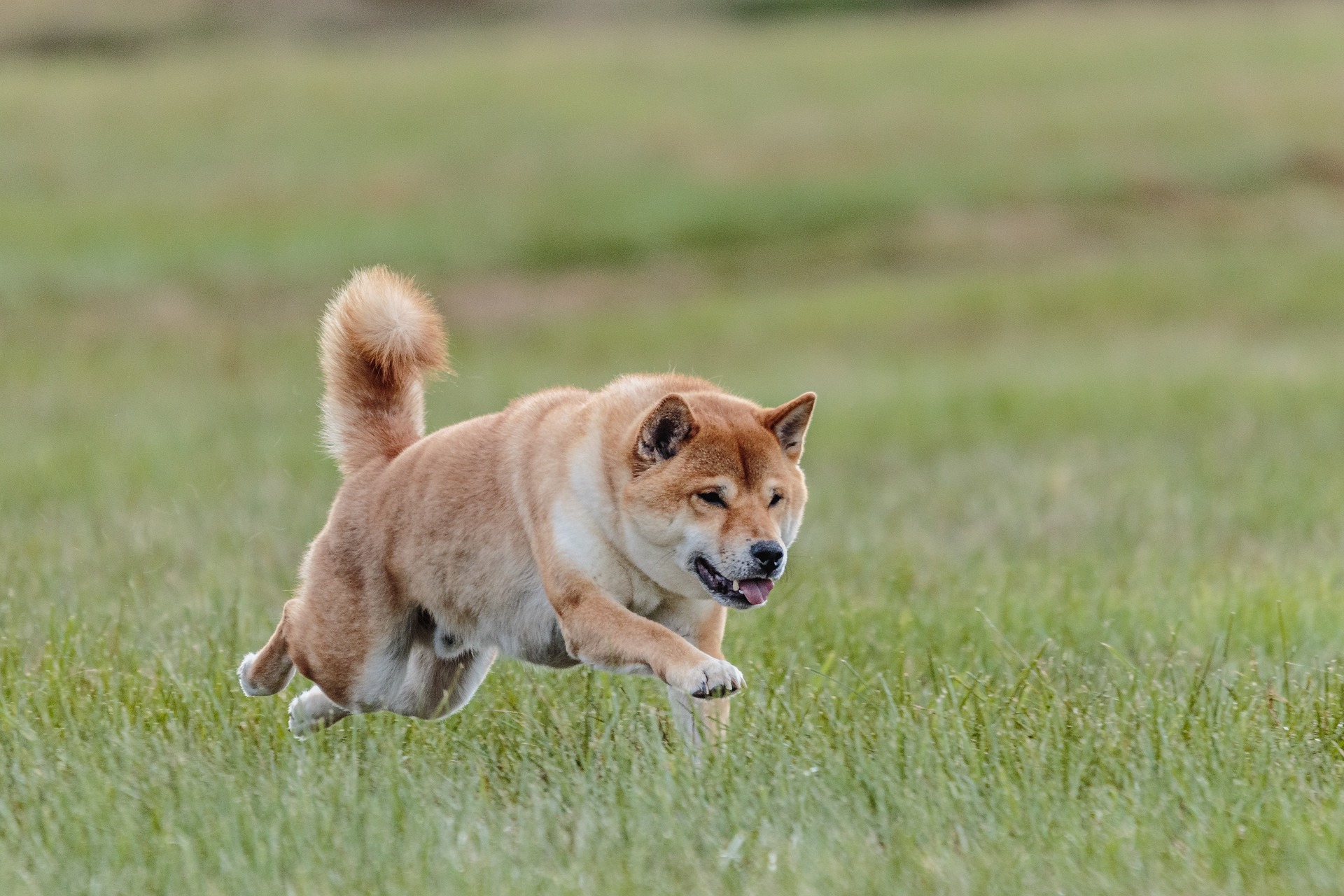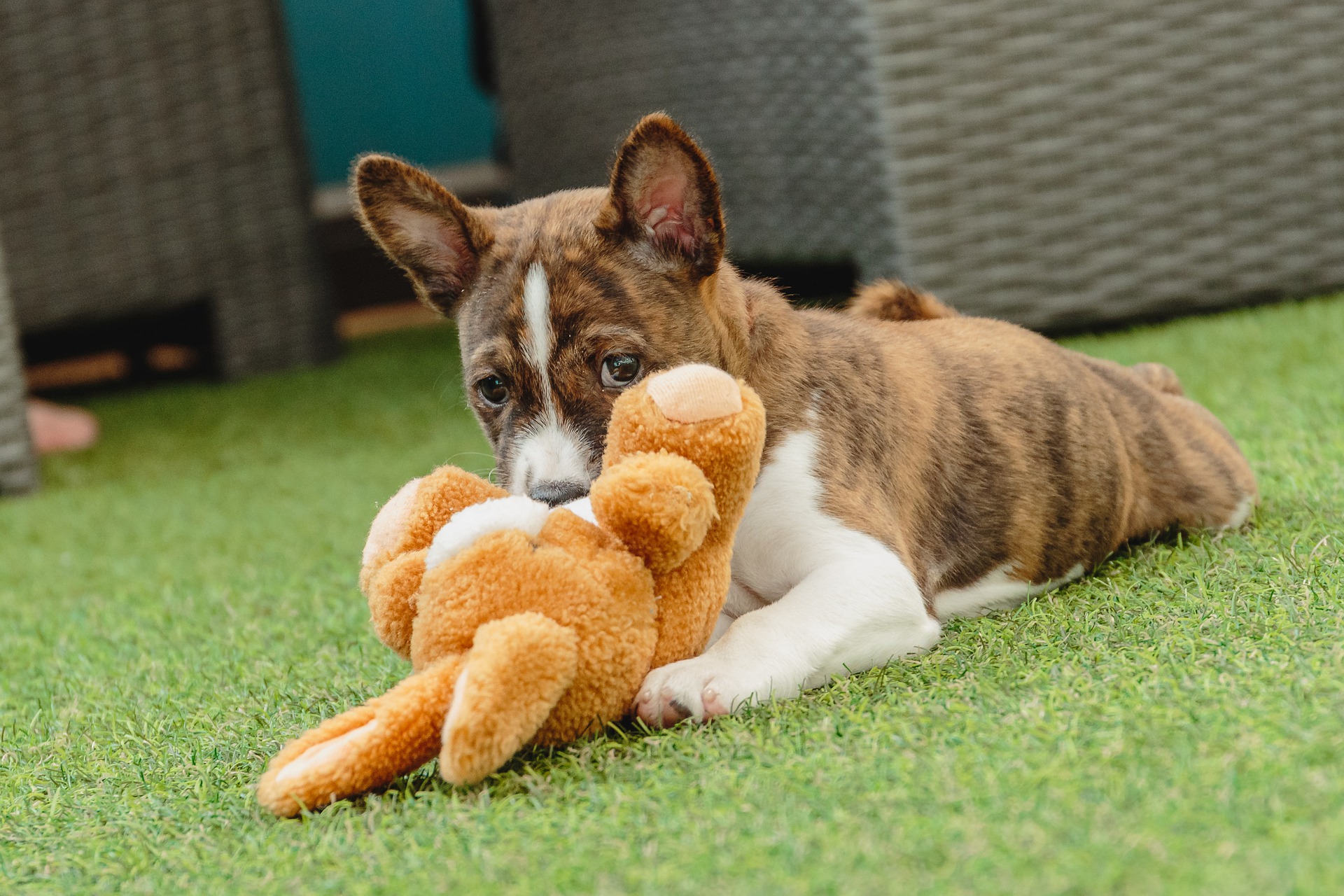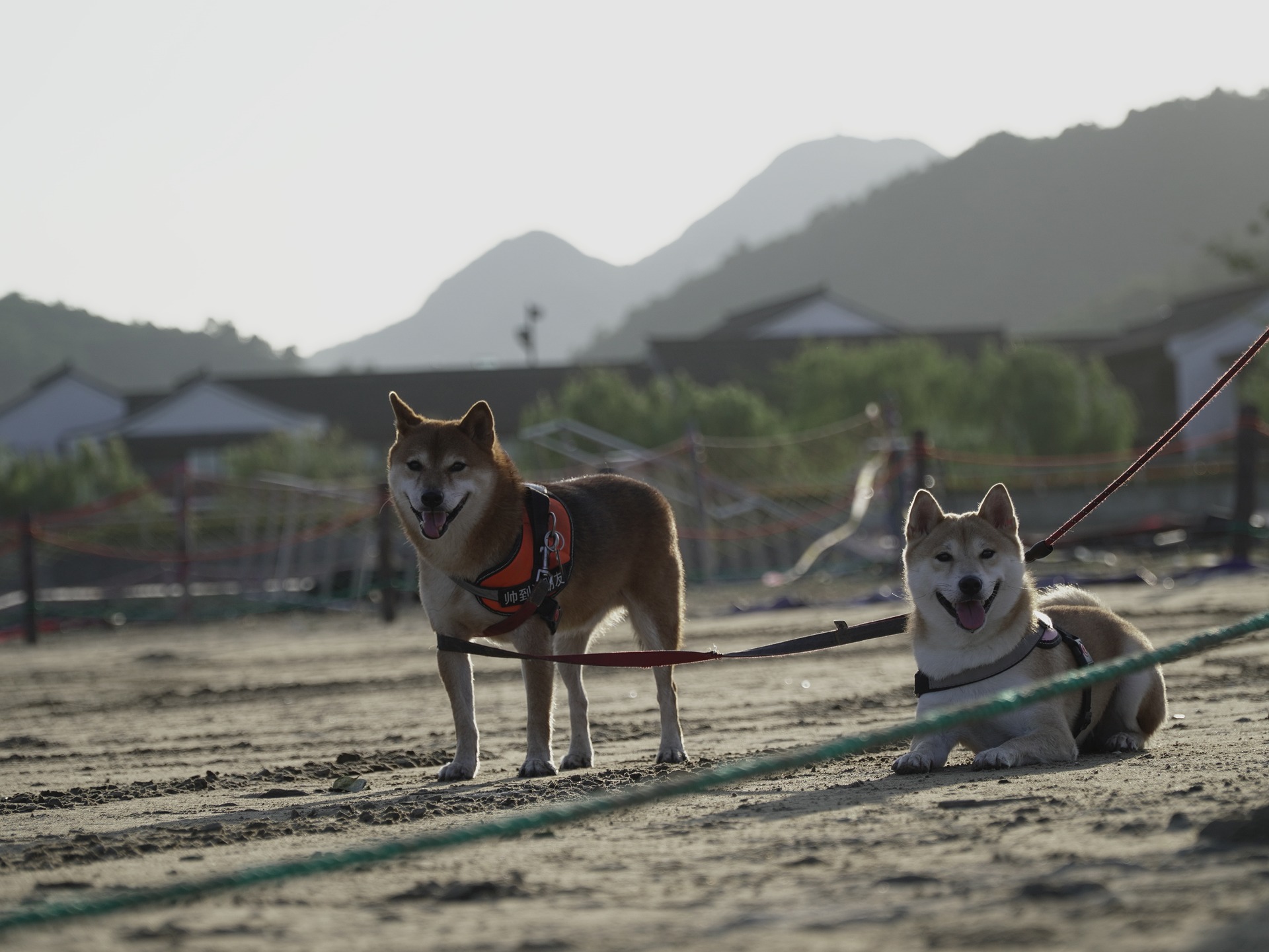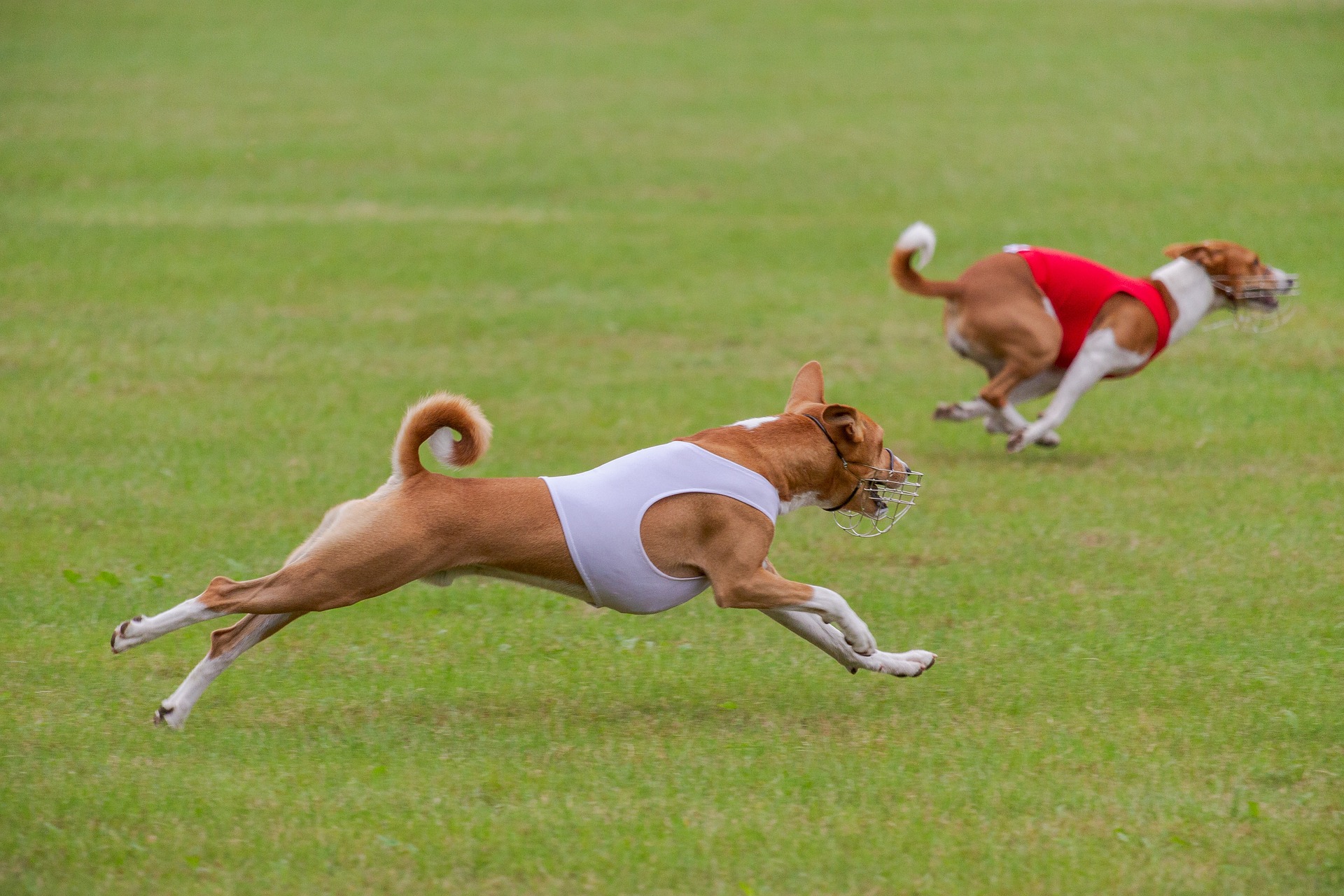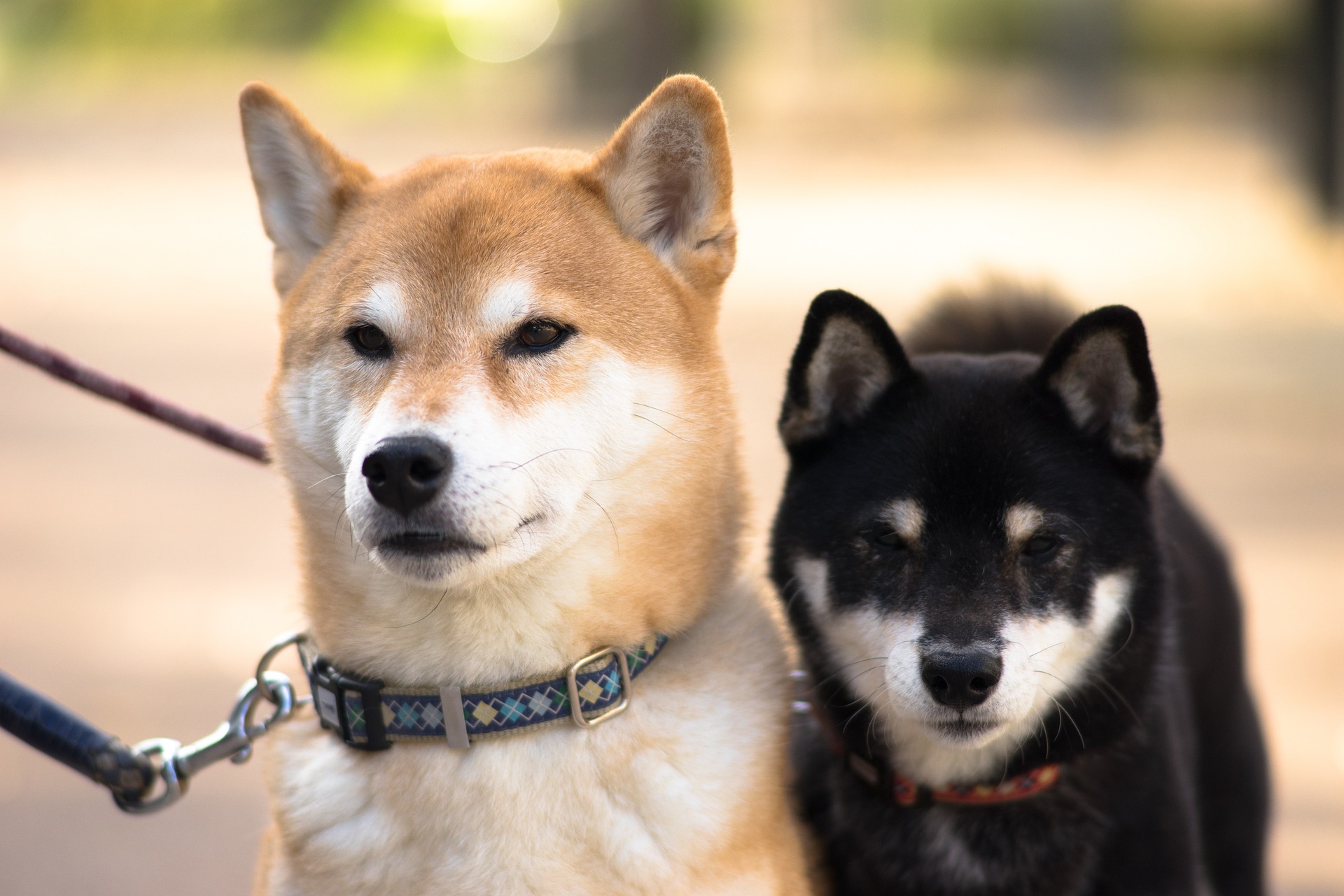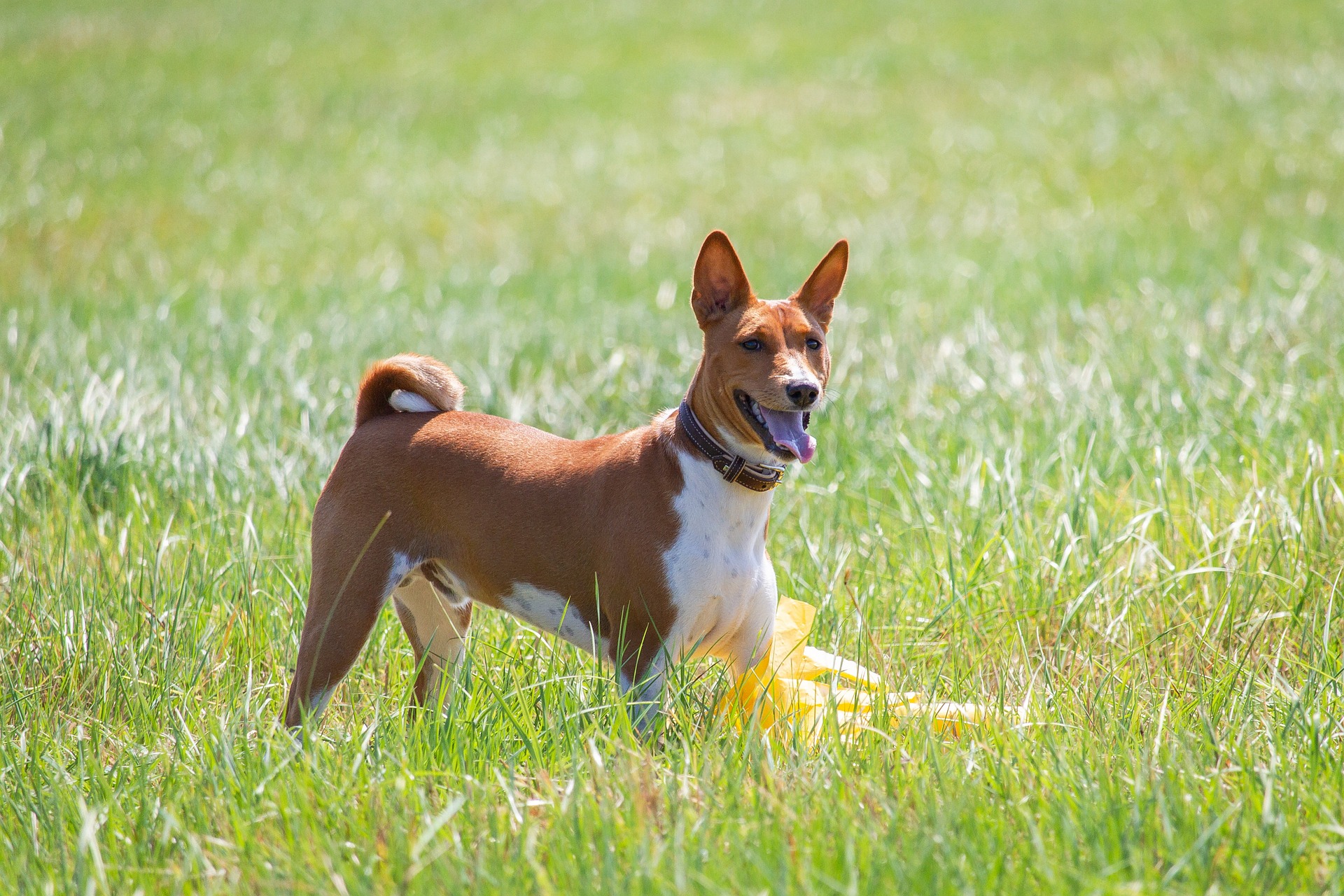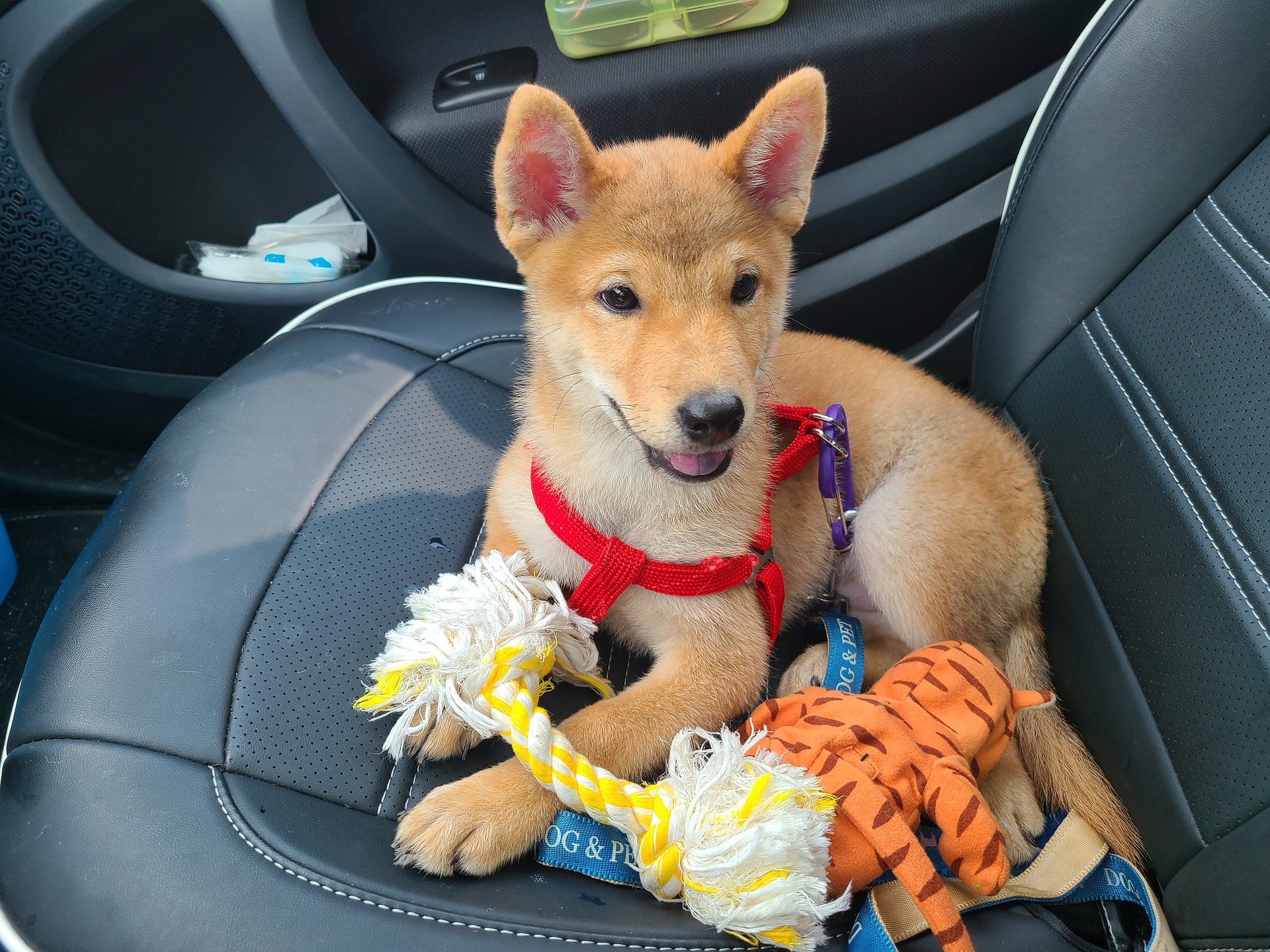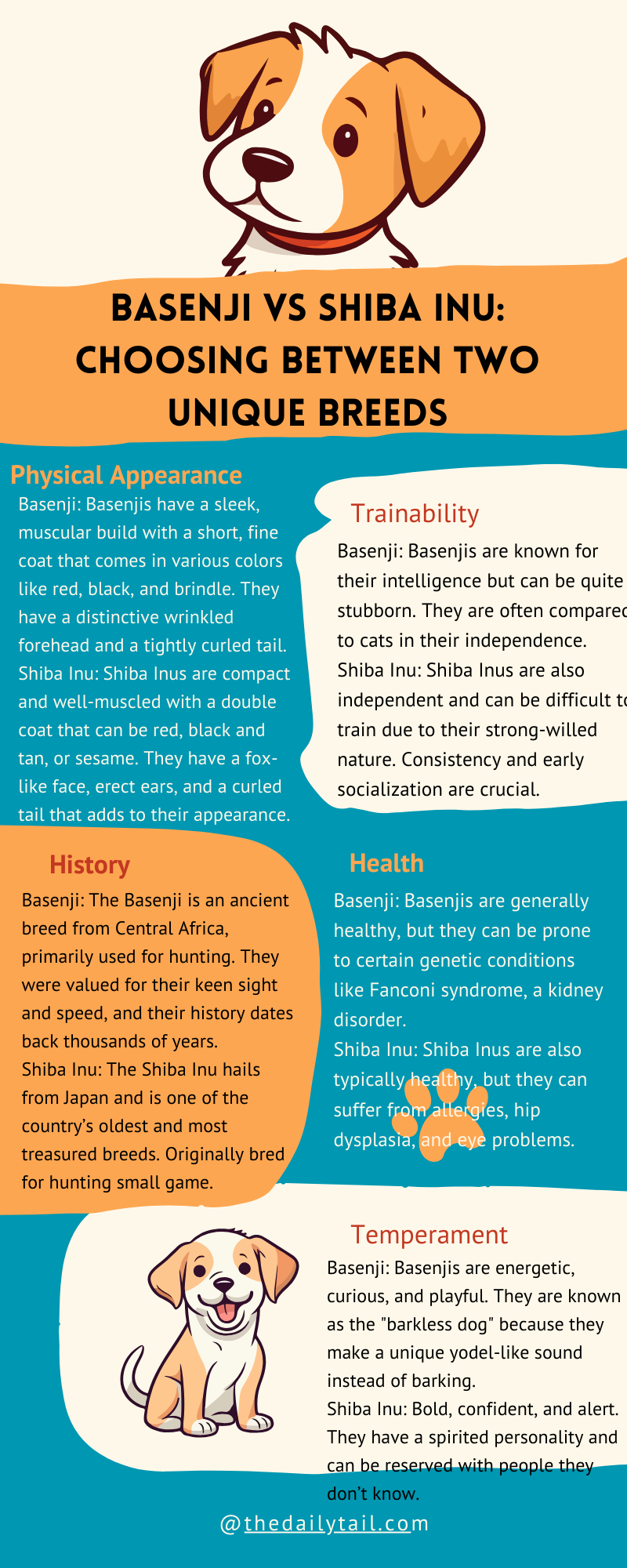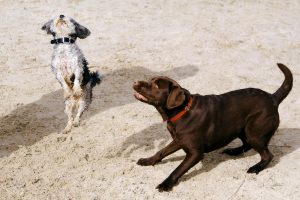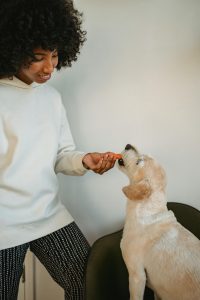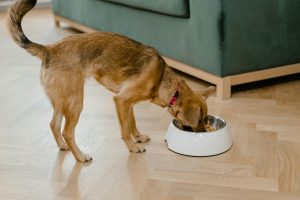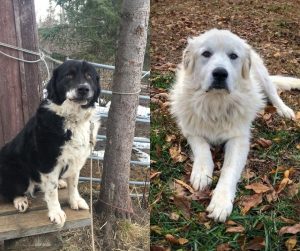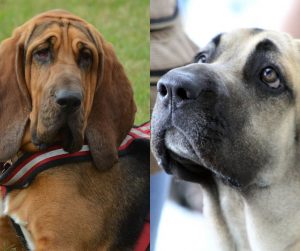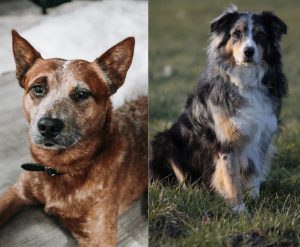When choosing a furry friend, the Basenji and Shiba Inu often captivate prospective dog owners with their unique charm and distinctive physical features.
Both breeds share a rich history as hunting dogs and display a similar aesthetic with their perky ears, tightly curled tails, and expressive faces.
The Basenji, hailing from Africa, is known for being virtually barkless due to its unique larynx, while the Shiba Inu boasts an ancient Japanese lineage, marked by a spirited and bold demeanor.
Diving deeper into the breeds’ characteristics reveals more than meets the eye.
Basenjis are known for their cat-like grooming habits and their curious nature, often described as independent and reserved.
Shibas, on the other hand, are infamous for their strong-willed personality and tendency to be more aloof, which can prove challenging for first-time owners.
Despite these differences, both breeds share a common need for mental stimulation and exercise to keep them content.
As for living in harmony with humans, both breeds exhibit traits that can suit different family dynamics. The Shiba Inu’s loyalty makes it a vigilant companion whereas the Basenji’s playful yet calm nature can be a perfect match for households.
Before deciding on either breed, potential owners must weigh factors such as grooming needs, training approach, and compatibility with children to ensure a harmonious fit for their lifestyle. Let’s take a deeper look into the Basenji vs Shiba Inu dog breed comparison.
Key Takeaways
- The Basenji and Shiba Inu possess distinctive traits but require adequate exercise and mental stimulation
- Grooming needs and socialization efforts differ significantly between the two dog breeds
- Compatibility with a family’s lifestyle is crucial when choosing between a Basenji and Shiba Inu
History and Origin
Exploring the history of dog breeds can be like a journey back in time. The Basenji and Shiba Inu are both breeds with deep historical roots, reaching back to ancient civilizations in Africa and Japan, respectively. They each carry unique tales that have molded them into the distinctly spirited dogs they are today. Despite being native to different continents, they are both recognized by the American Kennel Club.
Basenji Overview
The Basenji dog breed, historically dubbed the “Barkless Dog,” has its pawprints tracing back to Central Africa, particularly the Congo region. These dogs were companions to humans thousands of years ago, as depicted in Egyptian art.
It’s said that their distinct lack of bark might have been an evolutionary trait that helped them hunt silently. They have an impressive ability to remain clean and groom themselves much like cats, making them a rather unique type of dog.
Shiba Inu Overview
Nestled among Japan’s rich tapestry of culture and history, the Shiba Inu holds a special place. Originating from the rugged, mountainous regions, the Shiba Inu was a hunting companion dog, helping track small game through dense brushwood.
The term ‘Shiba’ is believed to reference either the brush they hunted in or their red coat which matched the autumn brush. Despite experiencing near extinction during World War II, dedicated breeding programs have ensured the survival and continued popularity of this spirited and alert breed. Shiba Inus remain one of Japan’s most cherished native dog breeds to this day.
Basenji vs Shiba Inu Physical Characteristics
When choosing between a Basenji and a Shiba Inu, one might notice the distinct physical traits that set these two breeds apart. Their unique appearances are epitomized by their coat types, sizes, and confident stances.
Visual Differences
The Basenji dog breed sports a sleek short coat, which often comes in a mix of colors, including black, tan, and white. Their erect ears and tightly curled tail give them an alert and poised look, often associated with intelligence and curiosity.
In contrast, the Shiba Inu also has erect ears but carries a distinctive thick, double coat that is commonly red, resembling a fox. Their bushy tail, which curls over the back, further accentuates their “wild” aesthetic.
Size and Weight Comparison
Basenji:
- Height: 16 to 17 inches at the shoulder
- Weight: Typically 22 to 24 pounds
Shiba Inu:
- Height: 13.5 to 16.5 inches at the shoulder
- Weight: Ranges from 17 to 23 pounds
On average, a Basenji stands slightly taller than a Shiba Inu, but their weights are comparable, leaning towards a more slender build. Both breeds are considered small to medium in size, making them suitable for a variety of living spaces, from apartments to houses with yards.
Basenji vs Shiba Inu Behavior and Temperament
When choosing between a Basenji and a Shiba Inu, understanding their behavior and temperament is vital. They’re both smart and strong-willed, but they express their energy in unique ways that fit different lifestyles.
Personality Traits
Both breeds have distinct personalities that set them apart. The Basenji is known for being independent and sometimes stubborn, a trait that can be charming but also challenging when it comes to training.
They are affectionate with their families, but they might not shower you with overt signs of love. Their intelligence is reflected in their curiosity and their ability to problem solve, often in ways that might outsmart an unprepared pet parent.
In contrast, the Shiba Inu often carries an air of bold confidence. They can be aloof, especially with strangers, and this reserved nature can be mistaken for indifference.
Yet, they are fiercely loyal, and once you’ve earned their trust, they will be a devoted companion. Just like Basenjis, Shibas have a strong personality that requires patience and consistency in training.
Apartment vs. House Living
When it comes to living environments, both breeds adapt well but have specific needs. Basenji dogs and Shiba Inu dogs can thrive in an apartment setting as long as their activity and energy levels are adequately managed.
Regular walks and mental stimulation are key to a well-behaved pet in a smaller space. Their moderate size makes them suitable for apartment life, but they greatly benefit from a secured place to explore.
For house living, especially with a yard, there’s more room for them to get their daily exercise. However, a secure fence is essential as both can be escape artists.
The Shiba Inu, with its hunting background, might see a yard as a place to chase and play, reflecting a moderate to high energy level, while the Basenji, even though originally a hunting breed as well, may use the space more for curiosity-driven exploration. Being known as the Barkless dog, the Basenji might be better-suited for a life in an apartment with neighbors. Shiba Inu dogs can be a bit more vocal.
Training and Socialization
Training and socialization are key elements in raising a well-adjusted dog. They not only foster obedience but also contribute to the dog’s psychological well-being. A dog that is well-trained and socialized from an early age will generally be more confident and easier to manage.
Trainability and Intelligence
Shiba Inus are known for their independent nature which can sometimes make dog training a challenge. They are intelligent and learn quickly, but they may choose to do things their own way, which requires patience and consistency from the dog owner.
Using positive reinforcement techniques, such as treats and praise, generally works well.
Basenjis, on the other hand, are equally intelligent and can be independent too. They benefit greatly from positive reinforcement and might become stubborn without it.
- Mental Stimulation: Crucial for both breeds to prevent boredom and encourage good behavior
- Crate Training: Useful for house training but should be introduced gently
Early Socialization Importance
Early socialization is crucial for both Shiba Inus and Basenjis.
It’s the cornerstone of a pet’s developmental phase that can shape their lifelong interactions with people and other animals.
Introducing them to a variety of experiences, environments, and individuals from a young age helps in nurturing a sociable and calm demeanor.
- Positive Experiences: Ensure that every new experience is positive
- Exposure: Regular exposure to different sights, sounds, and smells is key for a well-rounded dog
Exercise and Activity Needs
When it comes to keeping a pooch happy and healthy, exercise is key. The Basenji and Shiba Inu breeds are no exceptions and, in fact, they thrive on being active.
These wonderful fur buddies have individual needs that make them unique, so let’s dive in.
Basenjis: Daily Adventurers at Heart
Basenjis are the epitome of energetic. They possess a curious nature that keeps them on their toes, always sniffing out the next adventure.
Daily exercise is a must with these guys – think long, engaging walks or spirited play sessions.
They’re not just excited to move; they need to move.
It’s in their DNA to roam and explore, so ensuring they get plenty of activity during the day is vital for their wellbeing.
| Basenji | |
|---|---|
| Energy Level | High |
| Exercise Needs | Vigorous daily exercise |
| Favorite Activity | Exploring, playing fetch |
Shiba Inus: Poised Athletes
On the flip side, Shiba Inus carry themselves with a poised, almost fox-like elegance. Don’t let that fool you – these pups are athletic and muscular, with a confidence that shines through in their demeanor.
While they may seem independent, they too need their fair share of daily exercise to stay fit and satisfied. Walks and interactive games are just what a Shiba Inu needs to channel their energy constructively.
| Shiba Inu | |
|---|---|
| Energy Level | Moderate to high |
| Exercise Needs | Regular daily exercise |
| Ideal Activities | Jogging, agility training |
Whether a Basenji or a Shiba Inu graces your home, one thing’s for sure: they both cherish the time they spend moving around with their human pals.
Remember, a tired dog is a happy dog; with consistent and engaging exercise, they’ll be the companion everyone dreams of!
Health and Care
When considering a Basenji vs Shiba Inu as your next furry friend, it’s essential to understand their unique health and care needs. This guidance helps ensure that your pet lives a happy and healthy life.
Common Health Issues
Basenjis and Shiba Inus are generally healthy, but like any breed, they’re prone to certain health conditions.
Basenjis can be affected by Fanconi Syndrome, a kidney disorder, and Progressive Retinal Atrophy (PRA), an eye condition. Hip Dysplasia, a malformation of the hip joint, is also seen in these breeds but tends to be more common in Shiba Inus.
Shiba Inus, on the other hand, might face issues like Patellar Luxation, where the kneecap moves out of place, and Allergies that can cause skin irritation.
Both breeds can suffer from hypothyroidism, where the thyroid gland doesn’t produce enough thyroid hormone, and should be screened for Glaucoma, an eye condition leading to blindness if untreated.
Here’s a snapshot of the common health issues:
- Basenji:
- Fanconi Syndrome
- Progressive Retinal Atrophy
- Hip Dysplasia (less common)
- Shiba Inu:
- Patellar Luxation
- Allergies
- Hip Dysplasia
- Hypothyroidism
- Glaucoma
Regular vet visits help catch these issues early, which is why they’re so important for both breeds.
Grooming and Maintenance
When it comes to coat care, both the Basenji and Shiba Inu have some advantages. Their grooming needs are relatively low-maintenance, which makes them desirable for busy pet owners.
Basenjis are known for being hypoallergenic; they produce less dander than many breeds, and they’re pretty meticulous about their cleanliness.
Think of them as the cat of the dog world when it comes to self-grooming. These traits make them easier to care for concerning allergic reactions.
Shiba Inus have a double coat, which means they do quite a bit of shedding twice a year during the change of seasons.
They aren’t hypoallergenic and will require regular brushing during these times to manage the loose fur and keep your house hair-free.
Their grooming needs, in a nutshell:
- Basenji:
- Minimal shedding
- Low dander
- Rarely drools
- Shiba Inu:
- Seasonal heavy shedding
- Not hypoallergenic
- Requires more frequent brushing
For both breeds, regular nail trimming, teeth cleaning, and ear checks are essential to prevent any health issues and keep them looking their best.
Brushing a couple of times a week should be enough to maintain their coats, with baths as needed – they’re quite good at keeping themselves clean!
Compatibility with Families
Choosing a furry companion means thinking about how they’ll mesh with everyone in the household, from the kids to the other pets. How a dog adapts to a new home is just as important as how they get along with the family crew.
Now, let’s talk about how the Basenji and Shiba Inu fit into family life.
Child and Pet Friendliness
When it comes to children, Shiba Inus can be affectionate with their family, though their independent streak means they appreciate their own space.
Consequently, they’re usually better with older children who understand a dog’s personal boundaries.
On the other hand, Basenjis are known to be less child friendly, not because they don’t love a good playtime, but their aloof nature might make them less interested in interacting with younger family members.
As for other pets, it’s a bit of a mixed bag.
Basenjis have a high prey drive, so introducing them to a home with smaller animals needs to be done with care.
They can learn to coexist peacefully with other dogs and cats, especially if raised together.
Shiba Inus have a similar temperament, being somewhat reserved around other dogs and may take a while to warm up to other furry members of the family.
Introduce them slowly and supervise their interactions.
Adapting to a New Environment
Both breeds showcase a streak of independence when adjusting to a new home, but they handle it in their distinct ways.
The Shiba Inu is a loyal companion and tends to be a bit more adaptable, often finding comfort in the routine and structure provided by a loving family.
These pups are more on the reserved side with strangers but will quickly become a devoted part of the family once they feel at home.
Basenjis might seem indifferent as they settle in, but give them time, and they’ll show their loving and affectionate sides.
Their quiet nature and clean habits make them an easy fit for families who appreciate a less-demanding canine friend.
Keep in mind, their cleverness and independence might challenge first-time dog owners, but with patience and training, they become great companions.
Making the Choice: Basenji or Shiba Inu?
When someone’s in the market for a four-legged companion, choosing between two breeds as charming as the Basenji and Shiba Inu can feel a bit like a puzzle.
These two breeds share some similarities, notably their perky ears, affection for a good curl-up (with those distinctive tails), and their plush, head-turning coats. Yet, when one digs a bit deeper, vital differences emerge that could sway a decision.
Similarities
- Erect ears: A signature look for both breeds
- Curled tails: Adds to their charm
- Tan coats: Though they come in other colors too
The Basenji, with roots in Africa, is known for its unique, barkless trait. Instead, they make a special sound known as a “baroo,” due to their unusually shaped larynx.
This energy-packed little hound is perfect for someone who enjoys a silent but spirited canine companion.
Basenji Traits:
- Energy Level: High
- Family-Friendly: Yes, but may be better with older children
- Pet-Friendly: Might chase smaller pets due to hunting instincts
In contrast, the Shiba Inu hails from Japan with a fox-like appearance that has won hearts worldwide.
They carry themselves with a confident, almost cat-like independence. A Shiba Inu is suited for those who admire a dog with a strong personality, one that expresses loyalty as much as it does self-sufficiency.
Shiba Inu Traits:
- Energy Level: Moderate to high
- Family-Friendly: Yes, but prefers respect for its space
- Pet-Friendly: Can be socialized, cautious with other pets
When making the choice between a Basenji and a Shiba Inu, prospective pet parents should consider lifestyle and what they want in a relationship with their furry companion.
Both breeds are relatively low-maintenance in grooming but require commitment to training and socialization. The Basenji may need more creative outlets for its high energy, while the Shiba Inu might ask for a bit more understanding of its independent streak.
The right choice hinges on the blend of personal compatibility and commitment to meeting each breed’s unique needs.

